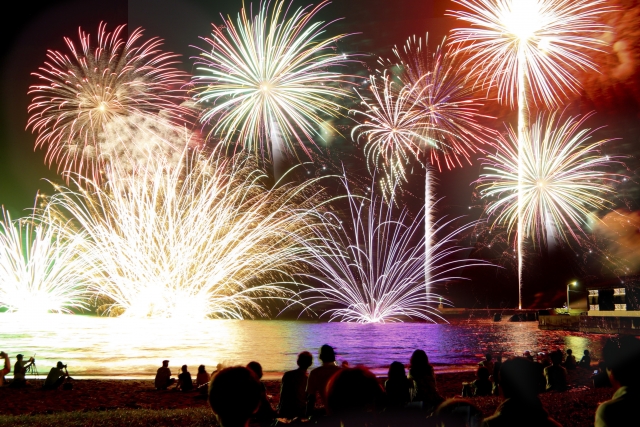Every summer in Japan, the night sky bursts into color as fireworks festivals — hanabi-taikai (花火大会) — light up towns and cities across the country.
More than just a visual spectacle, these events represent joy, togetherness, and the fleeting beauty that defines Japanese aesthetics.
Families, couples, and friends gather by riversides, parks, and beaches to watch the fireworks bloom like giant flowers.
In a season marked by heat and humidity, these displays offer a cool, shared moment of wonder under the stars.
The Meaning Behind Hanabi
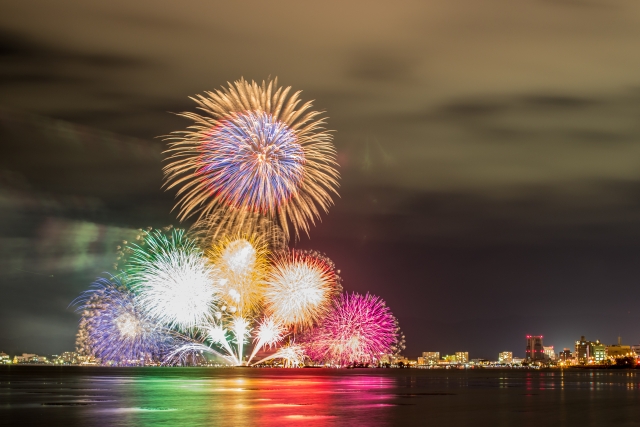
The word hanabi (花火) literally means “flower fire.”
It captures the Japanese appreciation for impermanence — the same sentiment behind cherry blossoms.
Just as sakura petals fall in spring, fireworks bloom brightly and vanish in an instant, symbolizing the transient nature of life, or mono no aware (物の哀れ).
This poetic sense of beauty in impermanence is what makes Japanese fireworks not only entertainment, but also a form of seasonal art.
More Than Fireworks: A Festival for the Senses
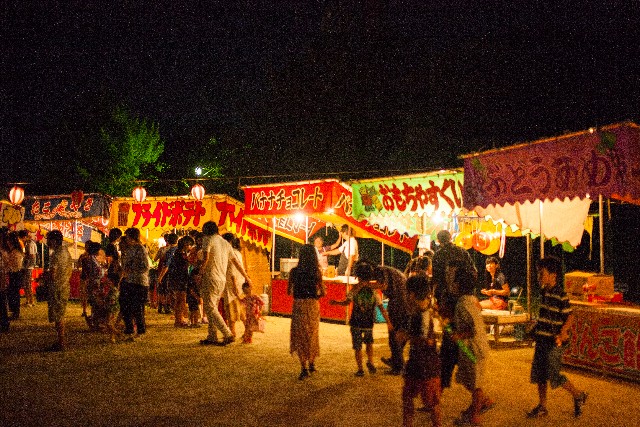
At major hanabi-taikai such as the Sumida River Fireworks Festival in Tokyo or the Nagaoka Festival in Niigata, the atmosphere is electric.
The sound of laughter mixes with the rhythmic calls of food vendors, and the air is filled with the sweet scent of yakisoba and kakigori (shaved ice).
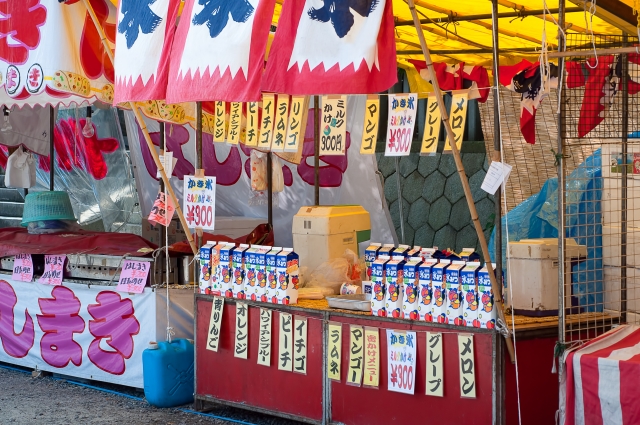
Yukata and Summer Tradition
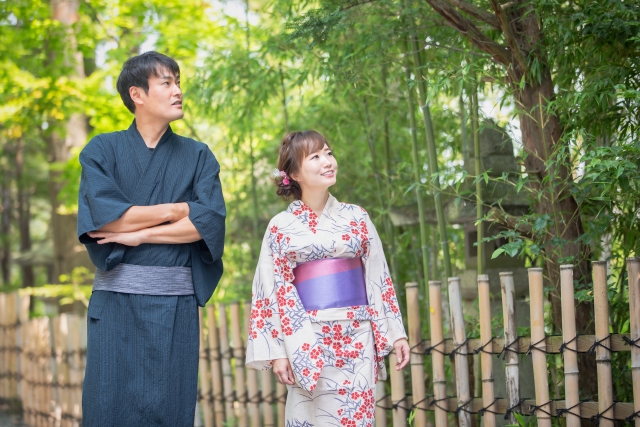
Many people wear yukata, a light cotton kimono, which adds to the nostalgic charm of the evening.
Wearing one is not only a fashion choice — it’s a way of stepping into tradition, connecting with the slower, simpler rhythms of old Japan.
The Artistry of Japanese Fireworks
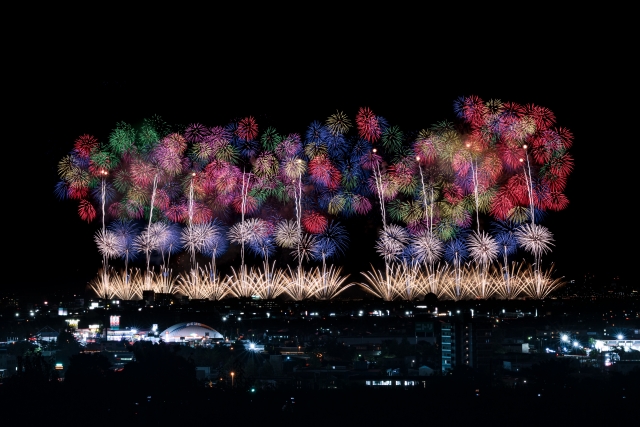
Japanese fireworks are renowned for their color precision and shape variety.
Craftsmen known as hanabi-shi spend months perfecting the chemical balance and timing of each burst.
Designs and Techniques
Patterns like botan (peony), kiku (chrysanthemum), and niagara (a cascade of light) are carefully designed to elicit emotion and awe.
Unlike the competitive “bigger and louder” displays in some countries, Japanese fireworks are about harmony and beauty, often choreographed with music to tell a visual story.
The Intimacy of Small Festivals and Handheld Fireworks
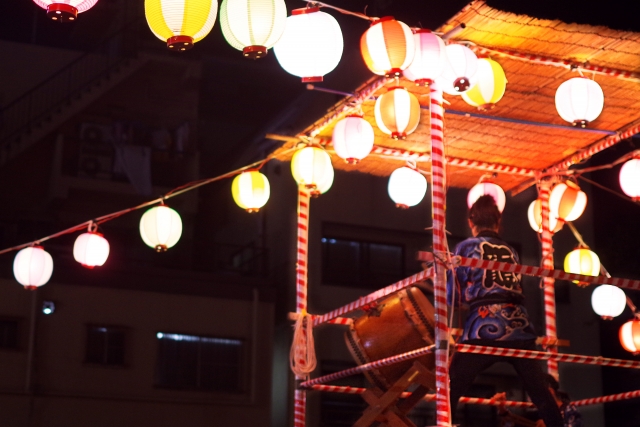
Beyond the grand events, small-town fireworks festivals are held throughout Japan during summer.
These gatherings offer a more local, heartwarming experience, where visitors can mingle with residents and feel the community spirit.
Handheld Fireworks at Home
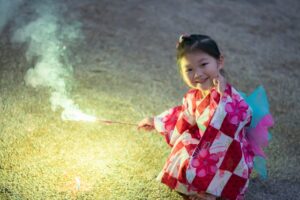
At home, families often enjoy handheld fireworks (tezutsu hanabi or senko hanabi) — tiny sparklers that glow quietly in the night.
Watching the gentle sparks fade away evokes a sense of peace, reflection, and nostalgia unique to Japanese summer evenings.
A Tradition Rooted in the Edo Period
The tradition of fireworks in Japan dates back to the Edo period (1603–1868).
The first recorded festival was held along the Sumida River in 1733 as a memorial for those who died in a famine and epidemic.
Over time, the solemn ritual evolved into a joyous celebration of life, carrying both remembrance and renewal at its heart.
This blend of reverence and festivity remains alive today in every hanabi-taikai.
Experiencing Hanabi Like a Local
For visitors, attending a fireworks festival is one of the most memorable ways to experience Japanese culture.
It’s not just about looking up at the sky — it’s about sharing the same moment of beauty with those around you.
If you join a festival, wear a yukata, try traditional foods, and take a moment to listen between the explosions —
the quiet pauses are where the heart of hanabi truly lives.
Related Articles on YUNOMI
-
Why Do Japanese People Wear Yukata in Summer?
-
The Meaning of Japanese Festivals (Matsuri) Explained
-
The Art of Finding Beauty in Fleeting Moments: Mono no Aware

